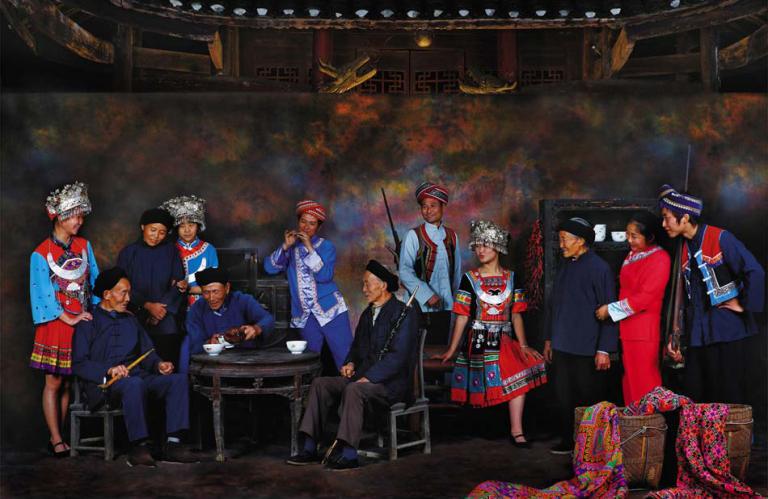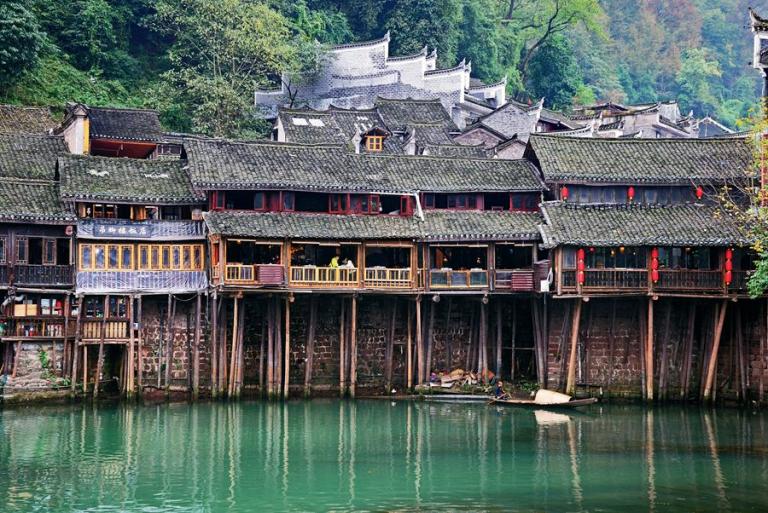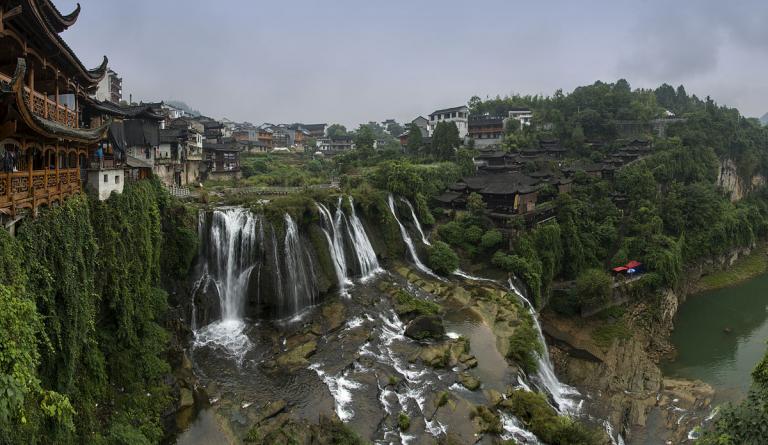The Tujia people in Hunan Province
3 min readThe Tujia people call themselves “bizi ka,”meaning “locally born and brought up.”They live in west Hunan, Hubei, and some counties in Sichuan. Their population is 8.02 million.
Most of them farm, receiving much influence from Han people in economy and culture, but still preserve their own features, seen mostly in their special funeral, wedding ceremonies and art.

Their funerals are probably different from any other ethnic minorities’.”Be happy at a funeral and sad at a wedding”is an age-old tradition. Drumbeats, dancing and singing are common at a Tujia funeral. When an old man dies, he is believed to go to the heaven and his death is called “”white happiness.”Men and women, old and young, will beat drums all night in memory of the dead. Their funeral dance is called “sa er he.”People in small groups, often several in each, will dance wildly insid a mourning hall to the rhythm of drumbeats and songs.
Usually,”sa er he”has a drummer and several dancers. By beating the drum’s body, edge and side, the drum produces different sounds, at which the dancers change their moves and rhythm. The songs have varied contents: history, seasons, morality, love, children’s rhymes or memories about the dead.
Both the singers and dancers are highly focused, while spectators clap in an excited chorus.
Different from their happy funerals, the Tujia people have another unique custom: weeping at a daughter’s wedding. While weeping, they sing about the sad feeling when leaving family members.

The weeping begins a month before a wedding, and reaches its climax the night before. The bride’s family chooses nine girls to sing with the bride. They sing different songs-some dedicated to parents, some dedicated to bothers and sister-in-laws, some denouncing the matchmaker who made all thesehappen. These weeping songs, commonly called “10 sisters’ songs,”are enough to move listeners to tears.
The Nuo Opera of Tujia people, the living fossil of Chinese operas, came from primeval religious ceremonies in ancient antiquity frequently seen in a Tujia village. Because of a strong sense of wor-shipping ancestors, the Nuo culture is well-preserved.”Nuo”means to expel evil spirits and devils. The Nuo Opera has been passed down not by books but by verbal teaching from masters to students. Besides a family teaching, learning from experienced ones is a common practice. Among all the students, only the best gets the secret best skills. Nuo has separate units called”tan.”Each “tan”has a troupe with teachers between six and twelve. Each troupe has a headman; the rest of the members are just like brothers. The headman must have a surprisingly good memory and remarkable performing skills. The Nuo troupes are active after the autumn harvest until the plowing season next year.
All actors in a Nuo Opera wear masks, which record the Tujia people’s history. In early years, characters in Nuo Opera could be distinguished by their masks. Most of the masks are wooden; some modern ones might be fabric. The patterns and colors on the masks vary greatly to bring out the char-acter of the roles.A Nuo Opera is also a religious ceremony and is usually performed in three parts: opening altar, opening cave and closing altar. The opening and closing altar is to receive and see gods off, while the opening cave part is the story to be played. When someone is sick, struck by a misfortune, he may pray and make a vow to the Nuo gods. When he comes back to honor the vow, he brings sacrificial objects like joss sticks and paper offerings.
